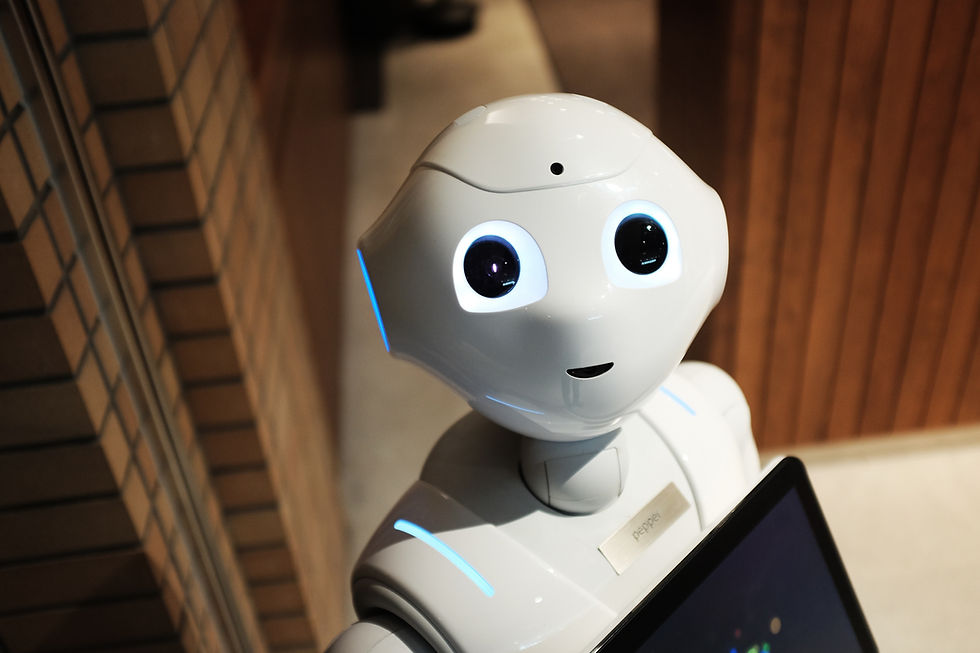The Dangers of Children Using AI: A Guide for Parents
- info732707
- Jan 29
- 3 min read
As artificial intelligence (AI) technology becomes increasingly integrated into our daily lives, children are among the most avid users of AI-driven applications, ranging from chatbots and virtual assistants to educational tools and gaming platforms. While AI can offer numerous benefits, including personalized learning experiences and enhanced creativity, there are significant risks that parents must consider. Understanding these dangers is crucial for fostering a safe and responsible digital environment for children.

Understanding AI and Its Appeal to Children
AI technology is designed to simulate human intelligence, enabling machines to perform tasks such as understanding natural language, recognizing patterns, and making decisions. Children are drawn to AI because of its interactive nature and the engaging experiences it provides. However, the complexity and rapid evolution of AI can expose young users to a variety of risks.
Key Dangers of Children Using AI
1. Exposure to Inappropriate Content
AI systems often rely on vast datasets to learn and generate responses. Unfortunately, this data can include inappropriate or harmful content. According to a report by the Children's Commissioner for England, "AI tools can inadvertently expose children to harmful or explicit material, which they may not be prepared to handle emotionally." This exposure can lead to confusion, anxiety, or even trauma, particularly for younger children.
2. Privacy and Data Security Risks
Many AI applications collect personal data to improve user experience. Children may unknowingly share sensitive information, such as their names, locations, or preferences. The Federal Trade Commission (FTC) warns that "children's data is particularly vulnerable to misuse, as they may not fully understand the ramifications of sharing personal information online." This data can then be exploited for marketing purposes or even fall into the hands of malicious actors.
3. Manipulation and Misinformation
AI systems can generate convincing yet misleading information. This capability raises concerns about the potential for children to be manipulated or misled by AI-generated content. As Dr. Emily H. A. M. T. Ormrod, an expert in child development, states, "Children may struggle to differentiate between reality and AI-generated information, leading to confusion and potential beliefs in false narratives." This can have significant implications for their understanding of the world around them.
4. Dependence on Technology
The convenience and engagement offered by AI tools can lead to over-reliance on technology for problem-solving and creativity. The American Academy of Pediatrics (AAP) emphasizes that "excessive screen time and reliance on technology can hinder critical thinking skills and decrease face-to-face interactions." This dependence may impact children's cognitive development and social skills in the long run.
5. Social and Emotional Risks
AI interactions may provide children with a false sense of companionship. While AI can simulate conversations, it lacks the emotional depth and understanding of human relationships. Dr. Sherry Turkle, a sociologist and author of "Alone Together," notes, "Children growing up with AI companions may struggle to form genuine connections with their peers, leading to feelings of isolation." This emotional detachment can affect their ability to develop healthy relationships in the future.
Tips for Parents
To navigate the complexities of AI and protect your children, consider the following strategies:
Educate Your Child: Teach your child about AI technology, emphasizing the importance of critical thinking and skepticism regarding online information.
Set Boundaries: Establish clear rules regarding the use of AI applications, including age-appropriate content and time limits.
Encourage Open Dialogue: Foster an environment where your child feels comfortable discussing their experiences with AI and any concerns they may have about its content or interactions.
Monitor Usage: Regularly review the AI tools your child uses, ensuring they are appropriate and safe. Utilize parental controls when available.
Promote Balance: Encourage a healthy balance between online and offline activities, emphasising the importance of real-life interactions and experiences.
Conclusion
While AI technology offers exciting possibilities for enhancing children's learning and creativity, it also poses significant risks that parents must address. By understanding the dangers associated with AI use and taking proactive measures to safeguard your child, you can help create a balanced and healthy digital environment. Your involvement and guidance are essential in helping your child navigate the complexities of AI while developing critical thinking and emotional intelligence.
For further resources on digital safety and children's technology use, organizations such as the American Academy of Pediatrics and the Children's Commissioner for England provide valuable insights and guidelines. Your proactive approach can make a meaningful difference in your child's engagement with AI technology.




Commentaires